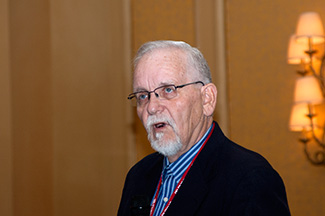Setting the Stage
As herd expands, demand for increasing average incomes and demand for high-quality beef paint a bright future for beef producers.
John Paterson sees tremendous opportunity for U.S. beef producers. The National Cattlemen’s Beef Association executive director of education and former Montana State University professor was the lead-off speaker for the Beef Improvement Federation (BIF) Annual Convention June 9-13, in Biloxi, Miss. Paterson’s comments set the stage for the opening general session’s discussion of rebuilding the nation’s cow herd.

Responding to the question of how much rebuilding may occur, John Paterson said the cow tally is likely to return to a pre-drought level of 28 million head by 2017.
Paterson recounted the reasons why, during recent years, U.S. cow numbers declined from 40 million head to around 28 million. He called drought a major factor, but also listed high feed costs, high operating costs, increasing age of producers and a shift in land usage from forage to row-crop production. Additionally, record cull-cow prices contributed to the decline in the inventory of brood cows.
However, herd expansion is now occurring more rapidly than expected. Paterson said 72% of that growth is occurring in the Southern Plains via increased heifer retention. Citing reasons for producer optimism, Paterson said drought conditions have improved in most of the United States, feed and forage supplies have improved and input costs have become less volatile. Supply and demand fundamentals also encourage herd rebuilding.
Responding to the question of how much rebuilding may occur, Paterson said the cow tally is likely to return to a pre-drought level of 28 million head by 2017. The number could reach 30 million head by 2020. He expects expansion to occur primarily among mid-size and large operations with 200 cows or more.
Paterson said the future looks bright for U.S. beef producers because of the still strong demand for high-quality U.S. beef, both domestically and internationally. He said steadily improving standards of living in many developing nations, and particularly in China, bode well for increased exports of beef.
“When people make more money, the more beef they want to eat,” stated Paterson. “And consumers are willing to pay a premium for what they want.”
Editor's Note: The 2015 BIF Annual Convention was hosted by Mississippi State University and the Mississippi Extension Service June 9-12 at the Beau Rivage Casino and Hotel in Biloxi. The Angus Journal and LiveAuctions.tv provide comprehensive online coverage of the event at www.BIFconference.com. Visit the Newsroom for summaries, proceedings, PowerPoints and audio of the sessions; the Awards page for announcements of award winners; and the Photos page for galleries of the tour stops.






